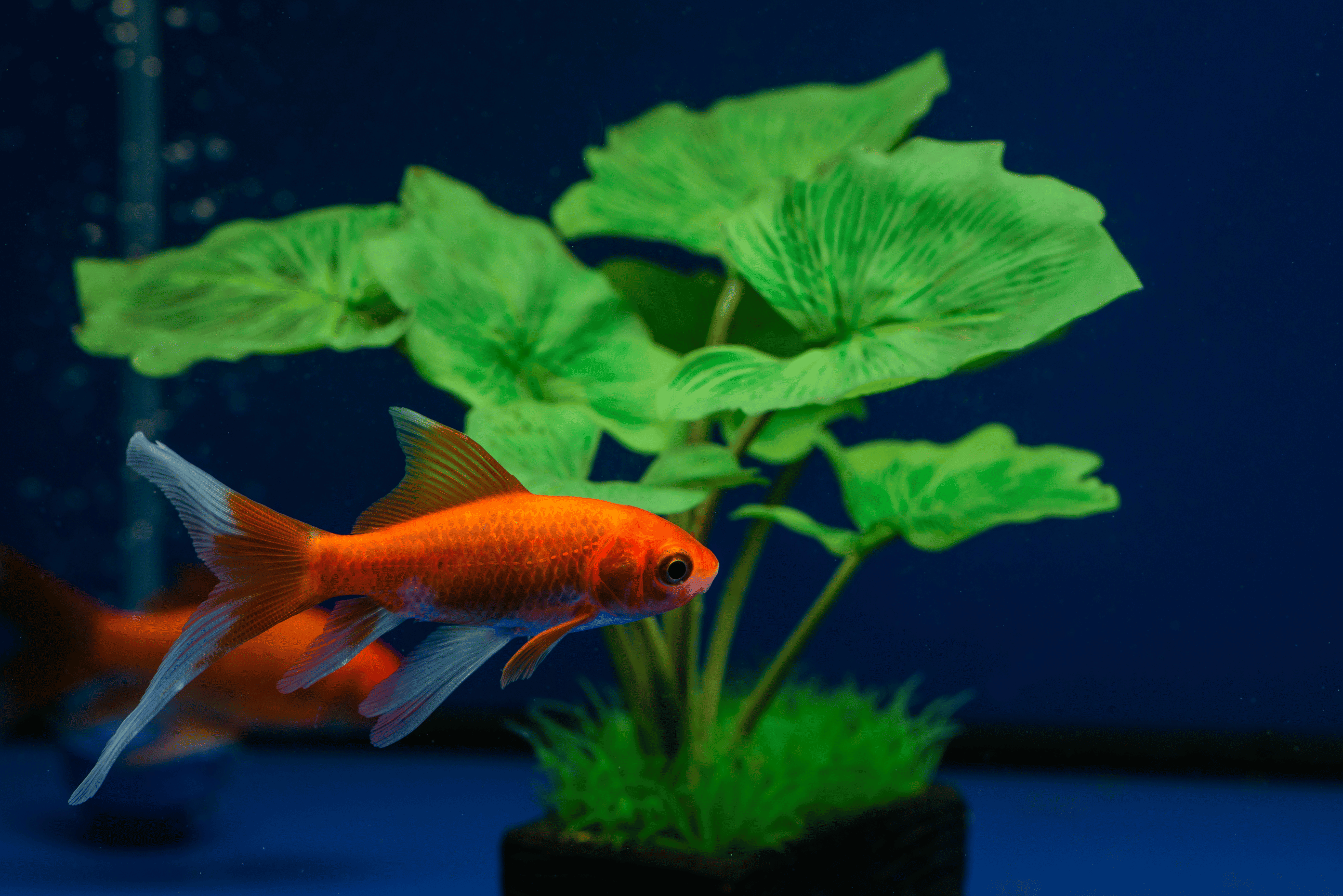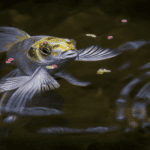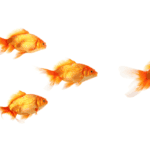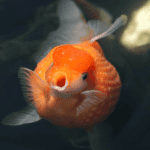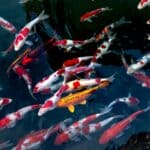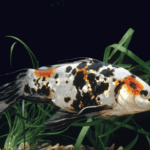Comet goldfish, sometimes referred to as comet-tailed goldfish or pond comets, are a beautiful and popular variety of goldfish that showcase a brilliant long forked tail resembling a comet’s trail. Developed in the 19th century in the United States, the Comet goldfish was the first single-tailed goldfish variety, and they are closely related to the common goldfish. Distinguished by their slender body, diverse colors, and flowing fins, Comet goldfish are an eye-catching addition to any aquarium or pond.
Originating from the Crucian carp, Comet goldfish were initially kept as a food source, much like their koi fish relatives. Over time, people took note of the naturally occurring color mutations and selectively bred these fish to create the vibrant and elegant Comet goldfish that we know and love today. The Comet goldfish’s flowing tail fin, combined with its sizable dorsal fin, thin anal fin, and long pectoral fins, make it a unique and graceful aquatic pet.
Caring for Comet goldfish requires attention to their tank conditions, diet, and potential tank mates. With proper care, these beautiful aquatic creatures have the potential to live for several years and grow to a considerable size. Whether you’re new to the world of goldfish or an experienced aquarist, the Comet goldfish is a lovely addition that is sure to bring beauty and fascination to your underwater world.
Comet Goldfish Origin
The Comet Goldfish is a single-tailed goldfish breed that originated in the United States. Developed during the 19th century, this fish variety was the first of its kind as a single-tail goldfish. Comet goldfish are closely related to the Common goldfish, having nearly identical body shapes.
Despite being similar in appearance to the Common goldfish, the Comet is slightly smaller and slimmer with a distinguishing trait – its long, deeply forked tail. This feature leads to its other name, Comet-tailed goldfish, or Pond Comets.
In terms of color, the traditional Comet goldfish is bright orange, while its ancestor is mainly brown with a lighter tan or gold belly. Spawning of goldfish results in various color variations passed onto the offspring, such as white, tan, gold, orange, and brown.
When it comes to size, Comet goldfish typically grow to about 7-9 inches in length, although some have been reported to reach up to 18 inches long when introduced into large ponds. In such cases, they can weigh around 5-6lbs and live for up to 18 years.
Comet goldfish are known for their endurance and adaptability, making them suitable for various environments such as tanks and ponds. Proper care, diet, and attention to water quality can extend their lifespan from the average 10 to 15 years up to several decades in some cases.
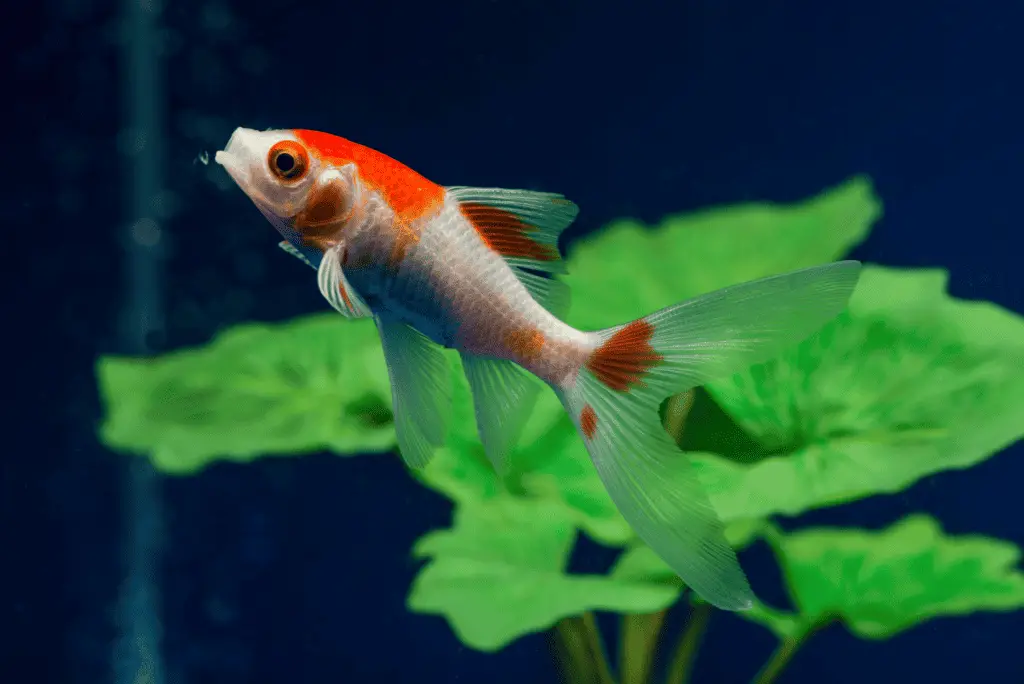
Physical Characteristics
Color Varieties
Comet Goldfish come in a wide range of colors, which can vary and even change as the fish ages depending on factors like water quality and diet. Sarasa Comets, for example, tend to exhibit more saturated colors and resemble koi with their deep red markings on a white body. Other Comets may have solid colors or patches of various hues.
Fin Types
One of the defining features of a Comet Goldfish is its long, flowing fins. This is in contrast to the common goldfish, which has stiffer and shorter fins. Comets have a heavily forked tail that is both long and elegant. Their slim body is accompanied by only a tail fin and a single dorsal fin, giving them a sleek appearance as they glide through the water.
Size and Shape
Comet Goldfish are generally smaller than common goldfish, but their size can vary depending on their environment. In a properly sized aquarium, which should be at least 40-50 gallons for a single fish, Comets can grow to approximately 7-8 inches in length. However, if provided with a pond environment, these fish can potentially reach over 12 inches.
Keep in mind that housing a Comet in a tank that is too small can result in stunted growth and the development of physical deformities.
To summarize, Comet Goldfish exhibit a range of colors and fin types, and their size can vary depending on the environment they are provided. Providing proper care and an adequate habitat will ensure your Comet Goldfish thrive and display their stunning physical characteristics.
Habitat and Tank Requirements
Comet Goldfish are a popular choice for both ponds and aquariums due to their hardiness and adaptability. They require proper care and suitable tank conditions to thrive. In this section, we will discuss the essential elements of their habitat and tank requirements.
Tank Size
Comet Goldfish can grow quite large, reaching up to 7 or 8 inches in length when kept in a spacious tank. To ensure their optimal growth and well-being, it’s crucial to provide adequate space.
- Minimum tank size for a single Comet Goldfish: 40 to 50 gallons
- Recommended tank size for a single Comet Goldfish: 75 gallons
Please consider that these recommendations are for one fish. If you plan to keep multiple goldfish, you’ll need to increase the tank size accordingly.
Water Parameters
To maintain a healthy environment for your Comet Goldfish, it’s essential to keep the water parameters within the ideal ranges. Below are the critical parameters you must consistently monitor and maintain:
| Parameter | Ideal Range |
|---|---|
| Temperature | 65 – 75°F (18 – 24°C) |
| pH | 7.0 – 7.5 |
| Ammonia, Nitrite, and Nitrate | As close to 0 ppm as possible |
Make sure to test the water regularly and perform water changes as needed to maintain suitable water quality.
Tank Setup
A properly set-up tank is crucial for the well-being of your Comet Goldfish. Here are some key aspects of an appropriate tank setup:
- Filtration: Use a high-quality and adequately-sized filter to remove toxins and maintain high water quality.
- Substrate: A smooth gravel or sand substrate is suitable for Comet Goldfish, as it allows them to sift through it without causing injury.
- Decorations: Provide hiding spaces and resting areas using soft, silk plants, driftwood, or rocks, ensuring the fish won’t get injured by sharp edges.
- Lighting: Moderate lighting is ideal for Comet Goldfish, and they can benefit from a natural day/night cycle.
- Aeration: Goldfish require a substantial oxygen supply, so utilizing an air pump or sponge filter is recommended to maintain proper oxygen levels.
By following these guidelines and regularly monitoring your tank conditions, you can provide a healthy and comfortable environment for your Comet Goldfish to thrive.
Diet and Nutrition
Comet Goldfish are omnivores, which means they consume a mix of plant matter, algae, and meaty protein. Providing a well-balanced diet is essential to ensure their health and improve their coloration.
When it comes to staple foods, you can feed your Comet Goldfish high-quality flake food and pellets, offering them protein levels of around 30 to 32%. Look for goldfish-appropriate pellets from reputable brands available at pet stores.
In addition to the staple foods, it’s important to offer your Comet Goldfish a variety of nutritious treats. Some options include:
- Frozen blood worms
- Daphnia
- Brine shrimp
- Tubifex worms
In terms of feeding frequency, it’s recommended to provide small meals at least two to three times a day. It’s best to feed only an amount that can be consumed within 2-3 minutes to avoid overfeeding and maintain water quality.
It’s important to remember that while providing a proper diet is essential, Comet Goldfish also thrive in an optimal environment. They prefer water temperatures between 65-75°F (18-24°C) and a pH range of 6.5-7.5. Regular water testing and adjustments are necessary for maintaining a stable environment for your fish.
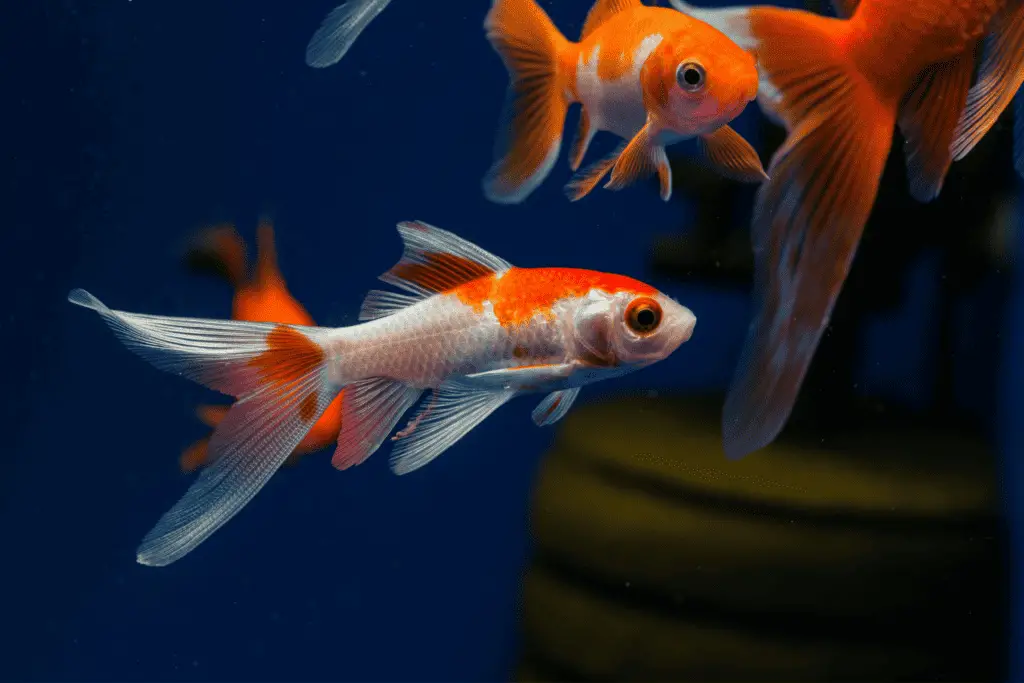
Behavior and Temperament
Comet Goldfish are known for their active, friendly, and social nature. These small fish love to dart around the aquarium, displaying their energetic personalities. They’re peaceful creatures, which makes them suitable tankmates for a variety of other non-aggressive fish.
In a community tank, Comet Goldfish are quite curious and outgoing. They adapt well to new environments and will often explore every corner of the aquarium. Their exuberant behavior is not only entertaining to watch but also signifies that they are healthy and comfortable in their surroundings.
To keep your Comet Goldfish content and engaged, consider providing them with a well-decorated tank or pond. Including features such as plants, rocks, and hiding spots will allow them to explore and satisfy their curiosity. Additionally, these fish are known to be quite intelligent, so you may observe some problem-solving behavior if you provide them with environmental enrichment in their habitat.
It’s important to note that while Comet Goldfish are generally peaceful, they can exhibit competition for food, especially if resources are scarce. To avoid any potential conflicts, ensure that their tank or pond has ample space to accommodate their active nature, and provide a consistent and well-balanced diet.
In summary, Comet Goldfish are energetic, social, and peaceful fish that will thrive in an environment that caters to their curious and active personalities. By providing them with appropriate tankmates, a stimulating habitat, and proper care, you can ensure that their behavior and temperament remain positive and enjoyable to observe.
Common Health Issues
Comet Goldfish, like any other fish, can be prone to several health issues. Maintaining good water quality and keeping stress levels low can help prevent these problems.
One of the most common diseases in Comet Goldfish is Ichthyophthirius multifiliis, also known as White Spot Disease or Ich. This disease is caused by a parasite and can lead to white spots appearing on the fish’s body. Symptoms include fish rubbing against objects in the tank and difficulty breathing. Treatment involves increasing the water temperature and using medications specifically targeted at treating Ich.
Another common health issue is caused by Trichodina, a protozoan parasite that affects the skin and gills of the fish. Symptoms include excessive mucus production, restless behavior, and rapid breathing. Treatment often involves salt baths, which can help alleviate symptoms and remove the parasites.
Comet Goldfish may also suffer from Flukes or Mongenean trematodes. These are flatworm parasites that live on the fish’s gills, skin, or eyes and cause irritation, inflammation, and even death in severe cases. Signs of Flukes infection include flashing (rubbing against objects), gasping for air, and swollen eyes. Treatment may include a combination of salt baths, medications, and maintaining good water quality.
Additionally, Comet Goldfish are prone to infections caused by:
- Costia (Ichthyobodo): A microscopic protozoan that causes respiratory distress, weight loss, and lethargy in affected fish.
- Anchor Worms (Learnea spp.): A worm-like parasite that burrows into the fish’s skin and can cause inflammation, infection, and even death if left untreated.
- Fish Lice (Argulus spp.): Small, disc-shaped parasites that attach themselves to the fish’s body and cause irritation, redness, and scale loss.
Each of these issues can be treated with appropriate medication and improved water conditions, which help to both healing the infected fish and preventing the spread of these parasites.
To prevent these common health issues, it is essential to maintain a clean and healthy environment for your Comet Goldfish. This includes regular water changes, appropriate filtration, and a strict quarantine protocol for any new fish or plants before introducing them to the main tank.
Breeding
Breeding comet goldfish can be an exciting and rewarding process. To begin, you’ll need to set up a suitable environment for your fish.
Preparing the Breeding Tank
Start by setting up a separate breeding tank, preferably at least 20 gallons in size. This tank should have a sponge filter or suitable alternative to maintain water quality. The ideal water temperature should be between 65-75°F (18-24°C), with a pH range of 6.5-7.5. General hardness (dGH), and carbonate hardness (dKH) should be maintained between 4-20.
Conditioning the Fish
Prior to breeding, condition the parent fish by feeding them high-quality, protein-rich foods. This will prepare the fish for reproduction by encouraging the production of eggs and milt. Having a well-balanced diet can greatly improve the chances of successfully breeding your comet goldfish.
Introducing the Fish to the Breeding Tank
Once the breeding tank is successfully set up and the parent fish have been conditioned, introduce the goldfish to the tank. It is ideal to have a ratio of one male to two or three females, as this will help increase the probability of successful breeding.
Spawning
To initiate spawning, gradually increase the water temperature daily by around 2°F (1°C), until you reach the upper limit of their temperature range, 75°F (24°C). Afterward, you should notice the males chasing the females around the tank – a sign of breeding behavior. Females will release their eggs, which stick to the surfaces around the tank, such as plants or spawning mops.
Hatching and Raising Fry
Once the eggs have been fertilized, it takes about 48 to 72 hours for them to hatch. To protect the eggs and resulting fry from being eaten by the adult fish, it’s advisable to separate them from the adults or remove the adults from the breeding tank.
After the fry hatch, provide them with a proper diet, such as infusoria or commercially available fry food, for optimal growth. Gradually transition them to more substantial foods, like brine shrimp, as they grow and develop.
Taking these steps into account, you can successfully breed comet goldfish and enjoy raising the next generation of fish in your care.
Comet Goldfish Lifespan
Comet Goldfish are a popular and attractive pet fish, known for their long lifespans when provided with proper care. On average, these fish can live anywhere between 10 and 20 years. However, there have been reports of goldfish living into their 30s and even 40s in optimal conditions.
To ensure a long and healthy life for your Comet Goldfish, it is essential to maintain appropriate water conditions and provide a suitable environment. A 50-gallon aquarium is recommended for one Comet Goldfish, with an additional 10 to 12 gallons per extra fish. Ideally, these fish would thrive in a tank 75 gallons and above, or even in a pond.
Proper diet and water quality are crucial factors in extending the lifespan of Comet Goldfish. Feeding a balanced diet specifically formulated for goldfish and monitoring water parameters can significantly improve their health and longevity. Here are some tips for maintaining optimal conditions:
- Regularly test water parameters, including pH, ammonia, nitrite, and nitrate levels, and adjust as needed.
- Change 10-20% of the water every week to maintain water quality.
- Provide a high-quality goldfish-specific diet, and supplement with occasional treats, such as live or freeze-dried brine shrimp, daphnia, or bloodworms.
- Install a powerful filtration system to remove harmful waste and toxins from the water.
In conclusion, with the proper environmental conditions and care, Comet Goldfish can have a long lifespan of up to 20 years or more. By following these guidelines, you can ensure a healthy and happy life for your pet fish.
